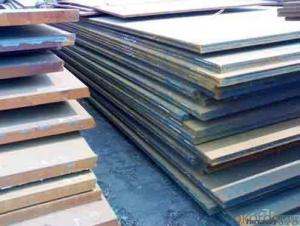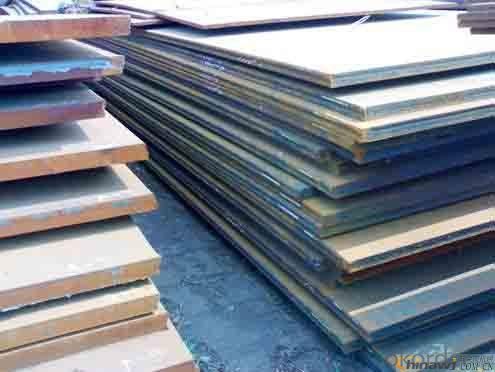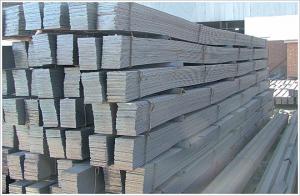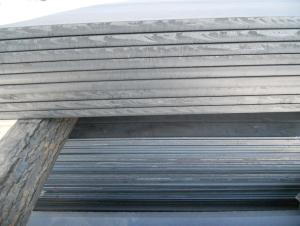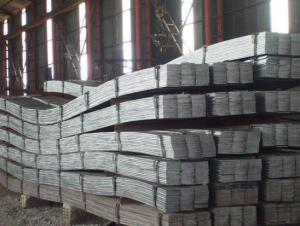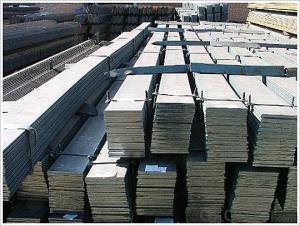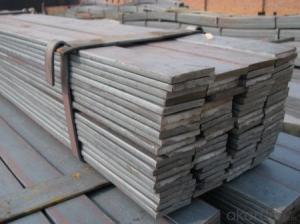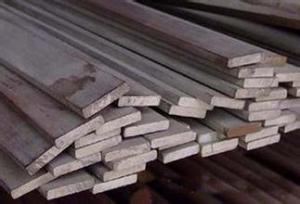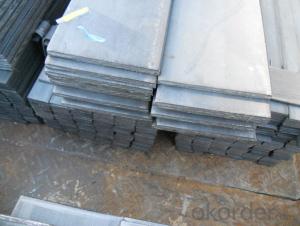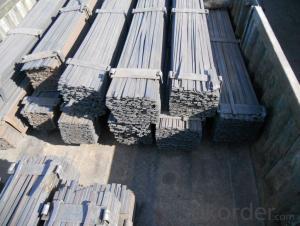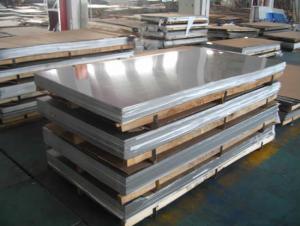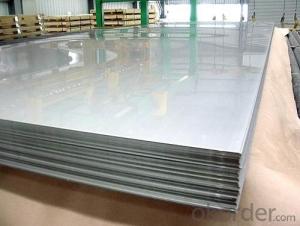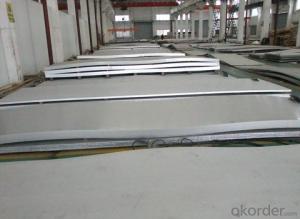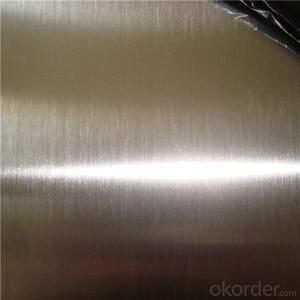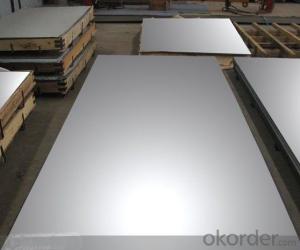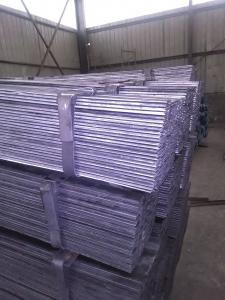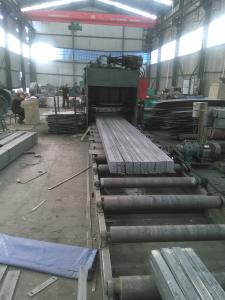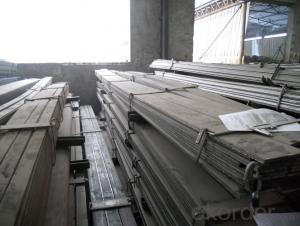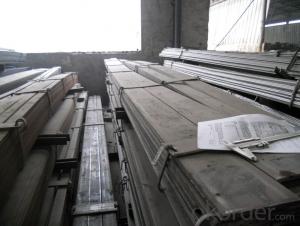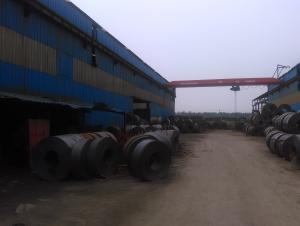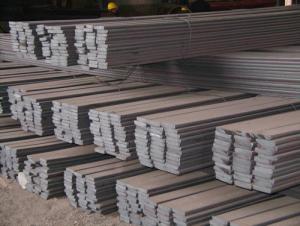Steel Pieces Slit From Steel Plate Sheet with Small Width
- Loading Port:
- China main port
- Payment Terms:
- TT or LC
- Min Order Qty:
- 25 m.t.
- Supply Capability:
- 10000 m.t./month
OKorder Service Pledge
OKorder Financial Service
You Might Also Like
1. Structure of Steel Pieces Slit From Steel Plate Sheet with Small Width Description:
Steel pieces slit from steel plate sheet with small width is a beam with an I-shaped cross-section. The horizontal elements of the "I" are known as flanges, while the vertical element is termed the "web". Steel pieces slit from steel plate sheet with small width is usually made of structural steel and is used in construction and civil engineering. The steel pieces slit from steel plate sheet with small width resists shear forces, while the flanges resist most of the bending moment experienced by the beam. Steel pieces slit from steel plate sheet with small width theory shows that the I-shaped section is a very efficient form for carrying both bending and shears loads in the plane of the web.
2. Main Features of Steel Pieces Slit From Steel Plate Sheet with Small Width:
• Grade: Q235
• Type: Mild carbon steel
• Deflection: The stiffness of the I-beam will be chosen to minimize deformation
• Vibration: The stiffness and mass are chosen to prevent unacceptable vibrations, particularly in settings sensitive to vibrations, such as offices and libraries.
• Local yield: Caused by concentrated loads, such as at the beam's point of support.
3. Steel Pieces Slit From Steel Plate Sheet with Small Width Images:
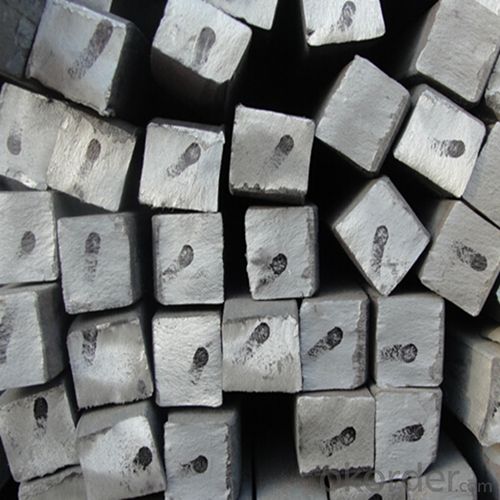
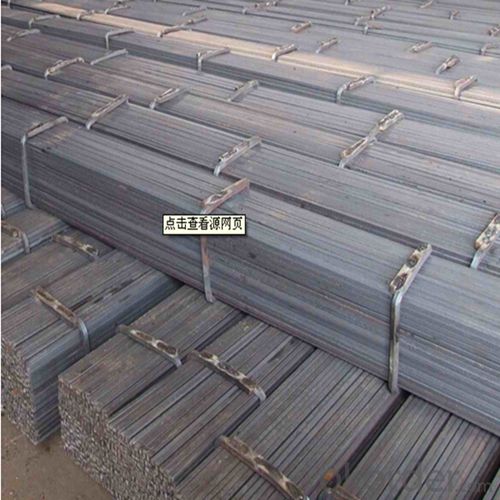
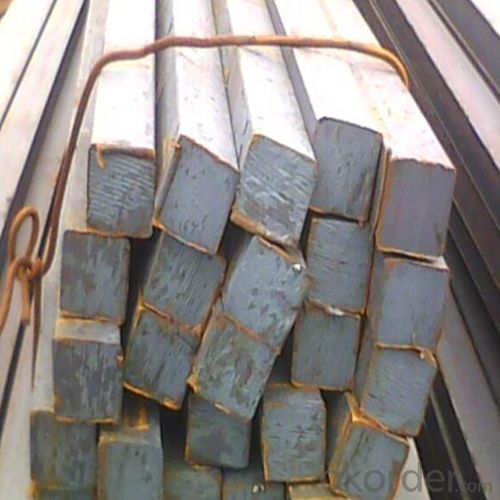
4. Steel Pieces Slit From Steel Plate Sheet with Small Width Specification:
Alloy No | Grade | Element(%) | ||||
C
| Mn
| S
| P
| Si
| ||
Q235
|
B
|
0.12—0.20 |
0.3—0.7 |
≤0.045 |
≤0.045
|
≤0.3
|
Alloy No | Grade | Yielding strength point(Mpa) | Tensile strength (Mpa) | Elongation after fracture(%) | ||||||
Thickness (mm) | Thickness (mm) | |||||||||
≤16 | >16--40 | >40--60 | >60--100 | ≤16 | >16--40 | >40--60 | >60--100 | |||
≥ | ≥ | |||||||||
Q235 |
B |
235 |
225 |
215 |
205 |
375--500 |
26 |
25 |
24 |
23 |
5. FAQ
We have organized several common questions for our clients,may help you sincerely:
①Is this product same as W beam?
In the United States, the most commonly mentioned I-beam is the wide-flange (W) shape. These beams have flanges in which the planes are nearly parallel. Other I-beams include American Standard (designated S) shapes, in which flange surfaces are not parallel, and H-piles (designated HP), which are typically used as pile foundations. Wide-flange shapes are available in grade ASTM A992,[4] which has generally replaced the older ASTM grades A572 and A36.
②How to inspect the quality?
We have a professional inspection group which belongs to our company. We resolutely put an end to unqualified products flowing into the market. At the same time, we will provide necessary follow-up service assurance.
③Is there any advantage about this kind of product?
Steel I beam bar IPE has a reduced capacity in the transverse direction, and is also inefficient in carrying torsion, for which hollow structural sections are often preferred.
- Q: What is flat steel, please? What are the specifications of flat steel?
- Flat steel can be finished steel, or can be used as the blank of welded pipe and thin slab for laminated sheet rolling.
- Q: Cold rolled flat steel standard. What is cold rolled flat steel?
- Flat steel, width 12-300mm, thickness 4-60mm, cross section is rectangular and with pure edge of steel. Flat steel can be finished steel, or can be used as the blank of welded pipe and thin slab for laminated sheet rolling. Section steel is one of the four major steel products (plate, tube, mould, wire). According to the section shape, the section steel is divided into simple section steel and complex section steel (deformed steel). The former refers to the steel, round steel, flat steel, angle steel, six angle steel; the latter refers to the I-beam, channel steel, steel, steel, steel frame bending etc..
- Q: Can steel flat bars be used for making brackets or supports for agricultural machinery?
- Yes, steel flat bars can be used for making brackets or supports for agricultural machinery. Steel flat bars are known for their strength and durability, making them suitable for heavy-duty applications in the agricultural industry. They can be easily formed or welded to create custom brackets or supports that can withstand the harsh conditions and heavy loads commonly encountered in agricultural machinery. Additionally, steel flat bars are readily available in various sizes, allowing for flexibility in design and application.
- Q: Are steel flat bars suitable for load-bearing applications?
- Yes, steel flat bars are suitable for load-bearing applications. They are commonly used in construction and engineering projects where strength and durability are required to support heavy loads. The flat shape of the bar provides stability and resistance to bending or warping under pressure, making it an ideal choice for load-bearing purposes.
- Q: Building poles, outdoor flat steel, the deeper the buried depth, the better?
- Building poles, outdoor flat steel, buried depth is not as deep as possible. According to the standard requirements, the level of the embedded depth is not less than 0.6 meters.
- Q: Are steel flat bars suitable for architectural cladding?
- Yes, steel flat bars can be suitable for architectural cladding. They offer durability, strength, and versatility in design. Steel flat bars can be shaped, cut, and welded to create different patterns and textures, allowing for unique and visually appealing cladding solutions. Additionally, steel flat bars can be treated with various coatings to enhance their resistance to corrosion, making them suitable for long-term use in exterior applications.
- Q: Are steel flat bars susceptible to warping or bending?
- Yes, steel flat bars are susceptible to warping or bending under certain conditions. Steel is a strong and durable material, but it is not completely immune to deformation. When subjected to excessive stress, heat, or improper handling, steel flat bars can warp or bend. This can occur during the manufacturing process, transportation, or when the bars are exposed to heavy loads or extreme temperature changes. To minimize the risk of warping or bending, it is crucial to handle and store steel flat bars properly, avoid excessive stress or heat, and follow the manufacturer's guidelines for usage and maintenance.
- Q: Can steel flat bars be used in agricultural applications?
- Yes, steel flat bars can be used in agricultural applications. Steel flat bars are versatile and have several properties that make them suitable for use in the agricultural industry. Firstly, steel flat bars are known for their strength and durability. They can withstand heavy loads and provide structural support, making them ideal for agricultural equipment such as trailers, plows, and cultivators. Additionally, steel flat bars are resistant to corrosion, which is crucial in agricultural settings where exposure to moisture, chemicals, and fertilizers is common. This resistance ensures the longevity of the equipment and reduces maintenance costs. Furthermore, steel flat bars are highly malleable, which allows for easy fabrication and customization. They can be bent, cut, or welded to meet specific requirements and design needs. This flexibility makes them suitable for various agricultural applications, such as constructing fences, gates, and animal enclosures. Overall, the strength, durability, corrosion resistance, and malleability of steel flat bars make them a reliable choice for agricultural applications. They provide the necessary support, withstand harsh conditions, and are easily adaptable to different agricultural requirements.
- Q: What is the maximum thickness-to-width ratio for steel flat bars?
- The maximum thickness-to-width ratio of steel flat bars can differ depending on the particular grade and type of steel employed. Nonetheless, typically, the maximum thickness-to-width ratio for steel flat bars is approximately 1:10. This implies that the bar's thickness should not surpass 10 times its width. It is crucial to acknowledge that this ratio might change according to the specific application and industry regulations. Thus, it is advisable to consult relevant engineering codes and standards to establish the maximum thickness-to-width ratio for a specific steel flat bar.
- Q: How do steel flat bars contribute to the overall efficiency of structures?
- Steel flat bars contribute to the overall efficiency of structures in several ways. Firstly, steel flat bars provide structural stability and strength. Due to their flat shape, they offer excellent load-bearing capacity and can withstand heavy loads and stresses. This allows structures to be built with fewer supports, reducing material and labor costs, and maximizing the use of space. Moreover, steel flat bars are highly versatile and can be easily manipulated into different shapes and sizes. This flexibility enables engineers and architects to design structures with intricate details and complex geometries. By using steel flat bars, structures can be optimized for specific purposes, such as bridges, buildings, or industrial facilities, improving their overall efficiency and functionality. Additionally, steel flat bars have excellent durability and resistance to corrosion. This ensures that structures built with them have a longer lifespan and require less maintenance and repair. Steel flat bars also exhibit high fire resistance, providing an added layer of safety to structures. Furthermore, steel flat bars are cost-effective. As steel is a widely available and recyclable material, it is relatively affordable compared to other construction materials. The ease of fabrication and installation of steel flat bars also reduces construction time, making projects more cost-efficient. Overall, steel flat bars contribute to the overall efficiency of structures by providing strength, versatility, durability, cost-effectiveness, and safety. Their properties make them an ideal choice for various construction applications, allowing for the creation of efficient, long-lasting, and economically viable structures.
Send your message to us
Steel Pieces Slit From Steel Plate Sheet with Small Width
- Loading Port:
- China main port
- Payment Terms:
- TT or LC
- Min Order Qty:
- 25 m.t.
- Supply Capability:
- 10000 m.t./month
OKorder Service Pledge
OKorder Financial Service
Similar products
Hot products
Hot Searches
Related keywords
